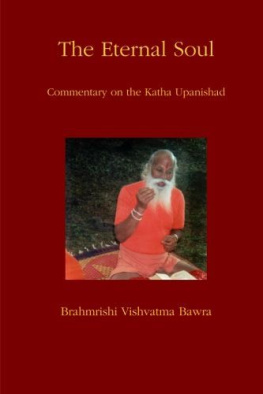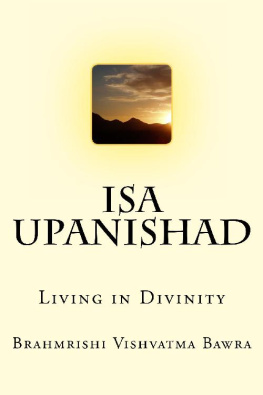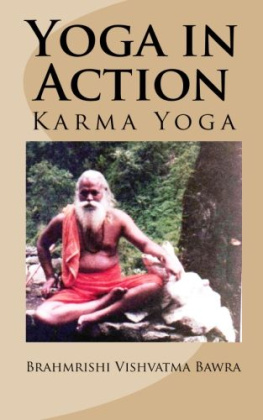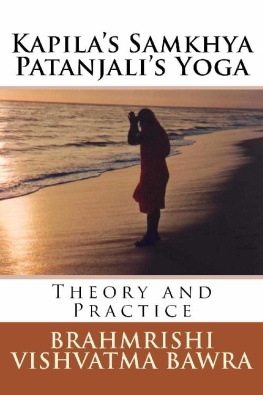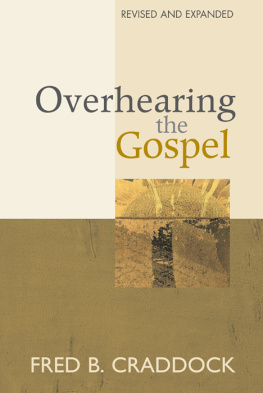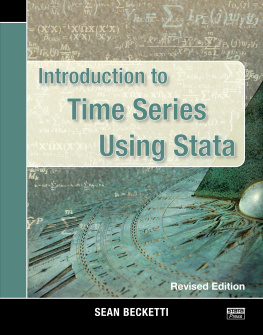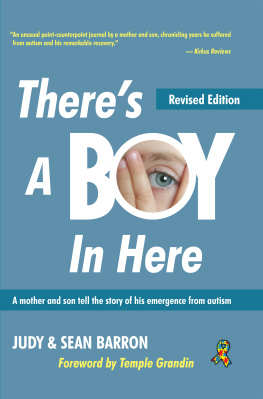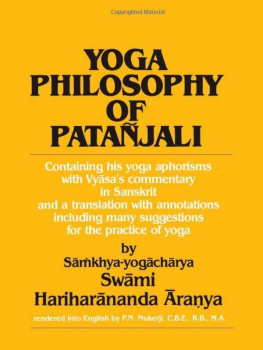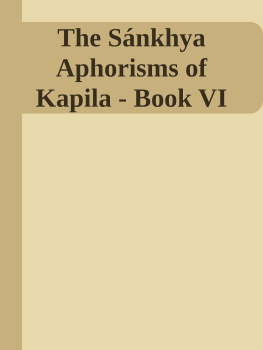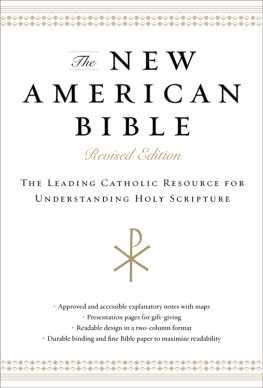Brahmrishi Vishvatma Bawra - Samkhya Karika with Gaudapadacarya Bhasya: Revised Edition
Here you can read online Brahmrishi Vishvatma Bawra - Samkhya Karika with Gaudapadacarya Bhasya: Revised Edition full text of the book (entire story) in english for free. Download pdf and epub, get meaning, cover and reviews about this ebook. year: 2012, publisher: Brahmrishi Yoga Publications, genre: Religion. Description of the work, (preface) as well as reviews are available. Best literature library LitArk.com created for fans of good reading and offers a wide selection of genres:
Romance novel
Science fiction
Adventure
Detective
Science
History
Home and family
Prose
Art
Politics
Computer
Non-fiction
Religion
Business
Children
Humor
Choose a favorite category and find really read worthwhile books. Enjoy immersion in the world of imagination, feel the emotions of the characters or learn something new for yourself, make an fascinating discovery.
- Book:Samkhya Karika with Gaudapadacarya Bhasya: Revised Edition
- Author:
- Publisher:Brahmrishi Yoga Publications
- Genre:
- Year:2012
- Rating:5 / 5
- Favourites:Add to favourites
- Your mark:
- 100
- 1
- 2
- 3
- 4
- 5
Samkhya Karika with Gaudapadacarya Bhasya: Revised Edition: summary, description and annotation
We offer to read an annotation, description, summary or preface (depends on what the author of the book "Samkhya Karika with Gaudapadacarya Bhasya: Revised Edition" wrote himself). If you haven't found the necessary information about the book — write in the comments, we will try to find it.
Brahmrishi Vishvatma Bawra: author's other books
Who wrote Samkhya Karika with Gaudapadacarya Bhasya: Revised Edition? Find out the surname, the name of the author of the book and a list of all author's works by series.
Samkhya Karika with Gaudapadacarya Bhasya: Revised Edition — read online for free the complete book (whole text) full work
Below is the text of the book, divided by pages. System saving the place of the last page read, allows you to conveniently read the book "Samkhya Karika with Gaudapadacarya Bhasya: Revised Edition" online for free, without having to search again every time where you left off. Put a bookmark, and you can go to the page where you finished reading at any time.
Font size:
Interval:
Bookmark:
Smkhya Krik
with Gaudapdcarya Bhsya
Revised Edition
with Commentary by
Brahmrishi Vishvatma Bawra
Compiled and Edited by
William F. Milcetich
Brahmrishi Yoga Publications
Publisher: Brahmrishi Yoga Publications
BrahmrishiYoga.org
Date: January 2012
Revised: January 2018
Brahmrishi Yoga Publications
All rights reserved
No part of this book may be used or reproduced in any manner without written permission, except in the case of brief quotations embodied in critical articles and reviews.
Printed in United States of America
Library of Congress Control Number: 2012930059
ISBN: 978-1468156799
Contents
Editors Revisio n i
Bhgavata Purnas Presentation of Kapila v
Pacaikha Stra m ix
Smkhya Krik
Origina Prefac e i
Introductio n
Krik and Commentar y
Bibiliography
After many years of presenting Smkhya philosophy to students I found that the standard phrase Smkhya is the oldest philosophy felt insufficient. For this reason, I am including an introduction that will add two presentations to highlight the development of Smkhya and provide acknowledgment and attribution to its origin. I believe a richness of appreciation and an enhancement of understanding are gained by including the insight of our ancient ancestors.
There is no historical record of the origin of Smkhya. In the Smkhya Krik , varakrishna states, This sacred and supreme knowledge the sage Kapila gave to suri out of compassion. suri gave it to Pacaikha who elaborated the doctrine. Handed down by tradition of disciples, this was summarized by varakrishna from the Sastitantra .
A summary of the story of Kapila is found in the Bhgavata Purna and follows this introduction. The Sastitantra of Pacaikha is a lost text. The aphorisms attributed to him are primarily found in Vysas commentary on Patajalis Yoga Stras . I have included these aphorisms along with commentary after the story of Kapila. Hopefully, my commentary will add to Swami Bawras insight into the Smkhya Krik .
The Smkhya Krik and Yoga Stras are compilations of knowledge preserved through the oral traditions. When the claim of antiquity is made, the reference is not to these texts. Yet, they are considered to mark the division between what is considered pre-classical and classical. There is debate about the historic dates of these compilations. These days the Yoga Stras is generally estimated to date from the third or fourth century CE, and the Smkhya Krik from around the middle of the fifth century, but the evidence from these dates is far from secure Likewise, earlier dates exist for the compilation of the Yoga Stras .
Although it is impossible to delineate the precise timeline, some light can be shed on the ancient origins, the emergence, and the development of this philosophy within its cultural context. Ideas and knowledge shift as a culture transforms and adjusts to challenges from within and without. Many core ideas survive, but often the presentation undergoes modifications. Over time, cultures develop traditions related to a body of knowledge. In this case, India endured multiple occupations during which physical evidence of written texts was destroyed. The oral tradition was all that remained to sustain the knowledge.
The oral tradition is commonly dismissed or relegated to myth. This creates doubt as to its authenticity. The meaning of language and specific concepts also changes as new ways of presenting the knowledge conform to changing times. Accordingly, culture and time had their impact upon Kapilas Smkhya Philosophy. Although the teaching originates from a very ancient oral tradition, and the early source books have been lost or destroyed, Smkhya theory may be found in many ancient texts, including the Mahbhrata , the Purnas, the Upanishads, and in the commentaries on Smkhya and Patajalis Yoga Stras .
The keystone of Smkhya Philosophy is the removal of suffering by rational analysis, which is accomplished by a true comprehension of the nature of reality. The theory of causation, the relationship between cause and effect, is the core of its analysis. This and other seminal principles are contained within the Upanishads, which are the basis of Vednta Philosophy. Yet, over time, Smkhya was sublimated to Vednta.
In Smkhya: A Prologue to Yoga , Deepti Dutta presents a method of approach for considering research into ancient texts encompassing the oral tradition . In summary, philosophic research cannot aspire to adhere to the distinct steps of scientific research. When traces of an ancient tradition are scattered in various works and there is no integrated primary version, we are left with a need to create coherence, not by analysis but through teasing out threads of meaning. Philosophical analysis in this case has a responsibility to sift through the available materials to find links between the old and new in the hopes of providing greater understanding of the power of this system. Therefore, a blend of the historic and mythical nature of, for instance, the story of Smkhya in the Purnas, is overcome by studying the coherence of ideas and not by criticisms. Dutta writes,
Echoing Professor Max Muellers thought we may say that in an ancient land like India, when we are to trace the history and development of ideas, we cannot chronologically order the texts and the philosophical ideas therein. We are to look for the essential inner grounds which come out of the contents themselves. Because philosophy is primarily a study of ideas and not of facts....There is ample evidence that the leading set of philosophical thought and ideas, scattered in amazingly diverse treatises of ancient Indian literature is Smkhya.
Clearly the origin of Smkhya cannot be fully established by physical, scientific means. But two consistent ideas emerge. The first is that Smkhya does not support the performances of Vedic sacrifices as a means to happiness. The second is that Smkhya held a special sanctity in ancient scriptural literature. The Mahbhrata emphasizes that all kinds of supreme knowledge available in the scriptures, from the Vedas to the Purnas, owe their origin to Smkhya.
The fundamental doctrine of modern, or classical, Smkhya is the dualism of two principles: purusha and prakriti . Classical Smkhya holds these two to be entirely distinct and independent. Purusha is static and prakriti is dynamic; one is being and the other becoming. Purusha is passive while prakriti, embedded with the three attributes (the three gunas), is the unfolding universe. There is no indication in this classical system that the two principals are derived from a higher unified principal, that is, the Supreme Cause. Because of the omission of any God as a creator of the universe, academics began to classify Smkhya as atheistic.
By contrast, the pre-classical texts highlight the existence of a Purushottama or Supreme Being as the ultimate reality, and purusha and prakriti are phases of this highest Lord. Prakriti is the dynamic power evolving this universe, performing under the influence of a Supreme Lord. Purusha is the pure being-ness or consciousness of the Supreme, an omnipresent, all-pervasive existence that dwells within and without the projected universe. Purusha remains passive and transcendent to the activity of prakriti , while also immanent and present everywhere. Purusha is both the transcendent Supreme Illuminator of the whole universe and the immanent indwelling knower of every created being.
The pre-classical Smkhya texts reveal that Smkhya is not just a philosophical doctrine but a means of finding emancipation. The purpose of carefully categorizing the outer world is to understand the role our experience plays in both bondage and liberation. Within the Vysa Bhsya (commentary) on Patajalis Yoga Stras , which is the primary source of the oldest Smkhya aphorisms of Pacaikha, it is quite clear how integrated Smkhya and Yoga are. Emancipation is based in knowledge, but ends in meditative practices. Both are necessary for liberation as will be seen in the Bhgavata Purna s presentation of Smkhya to Kapilas mother.
Font size:
Interval:
Bookmark:
Similar books «Samkhya Karika with Gaudapadacarya Bhasya: Revised Edition»
Look at similar books to Samkhya Karika with Gaudapadacarya Bhasya: Revised Edition. We have selected literature similar in name and meaning in the hope of providing readers with more options to find new, interesting, not yet read works.
Discussion, reviews of the book Samkhya Karika with Gaudapadacarya Bhasya: Revised Edition and just readers' own opinions. Leave your comments, write what you think about the work, its meaning or the main characters. Specify what exactly you liked and what you didn't like, and why you think so.


